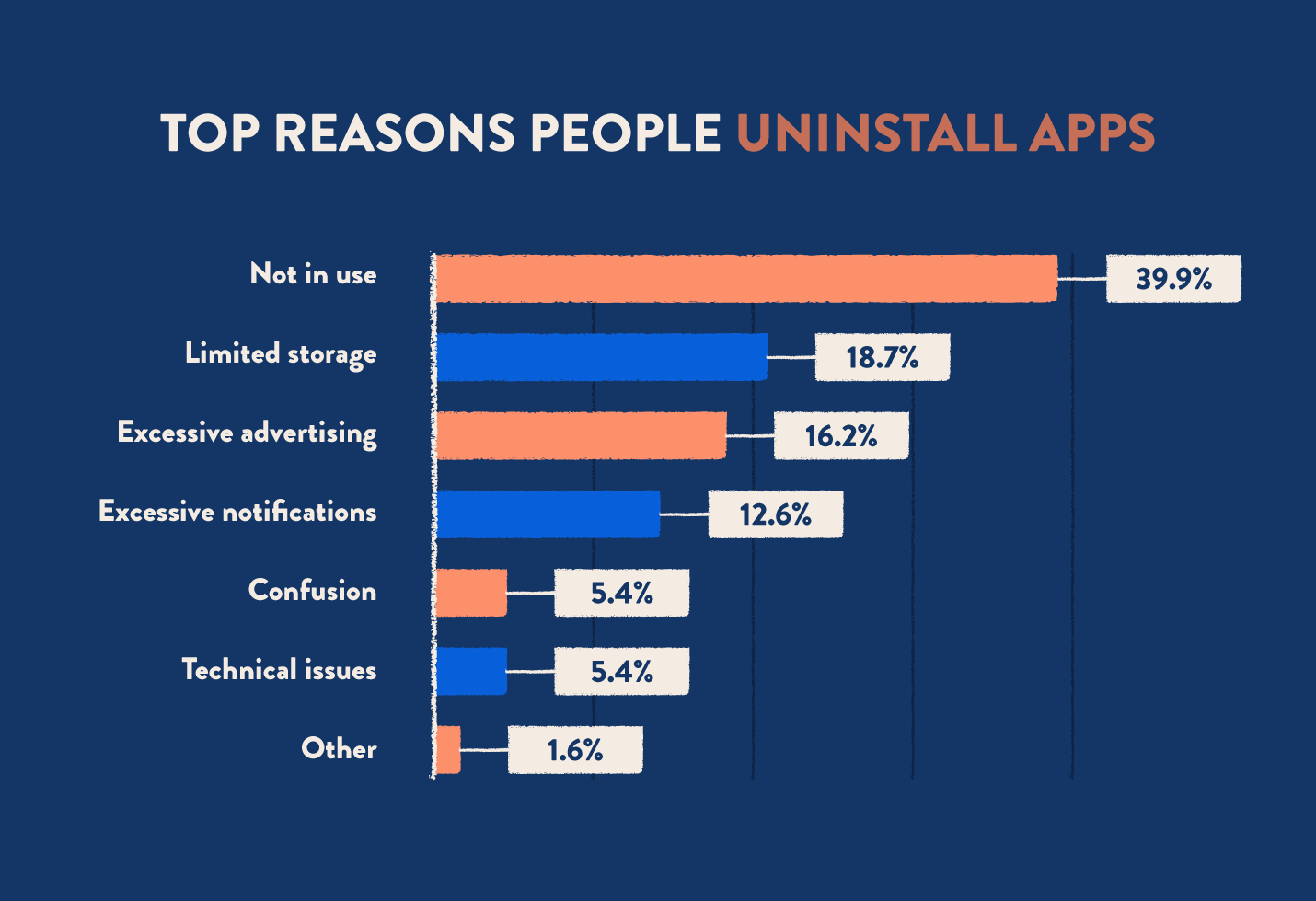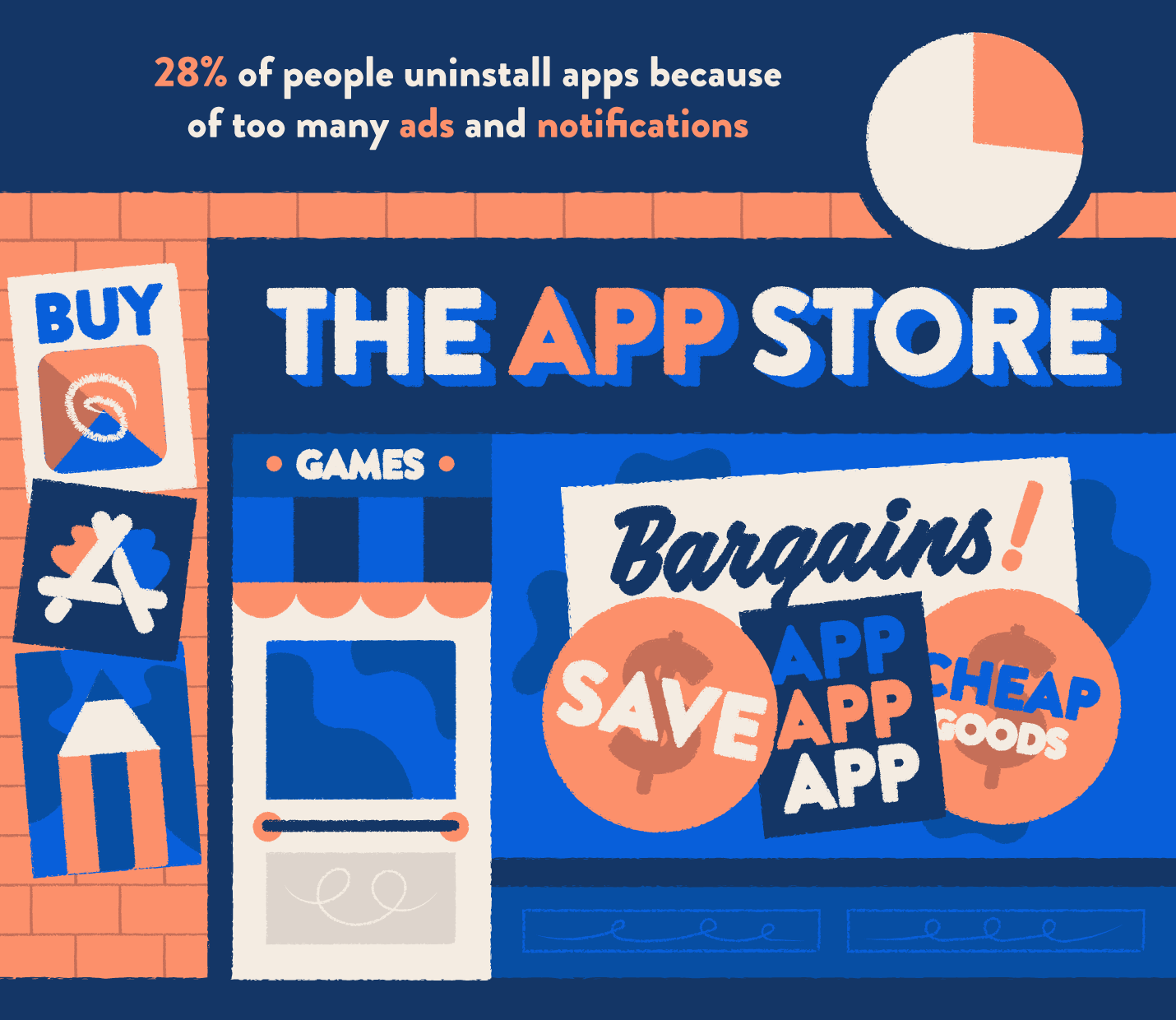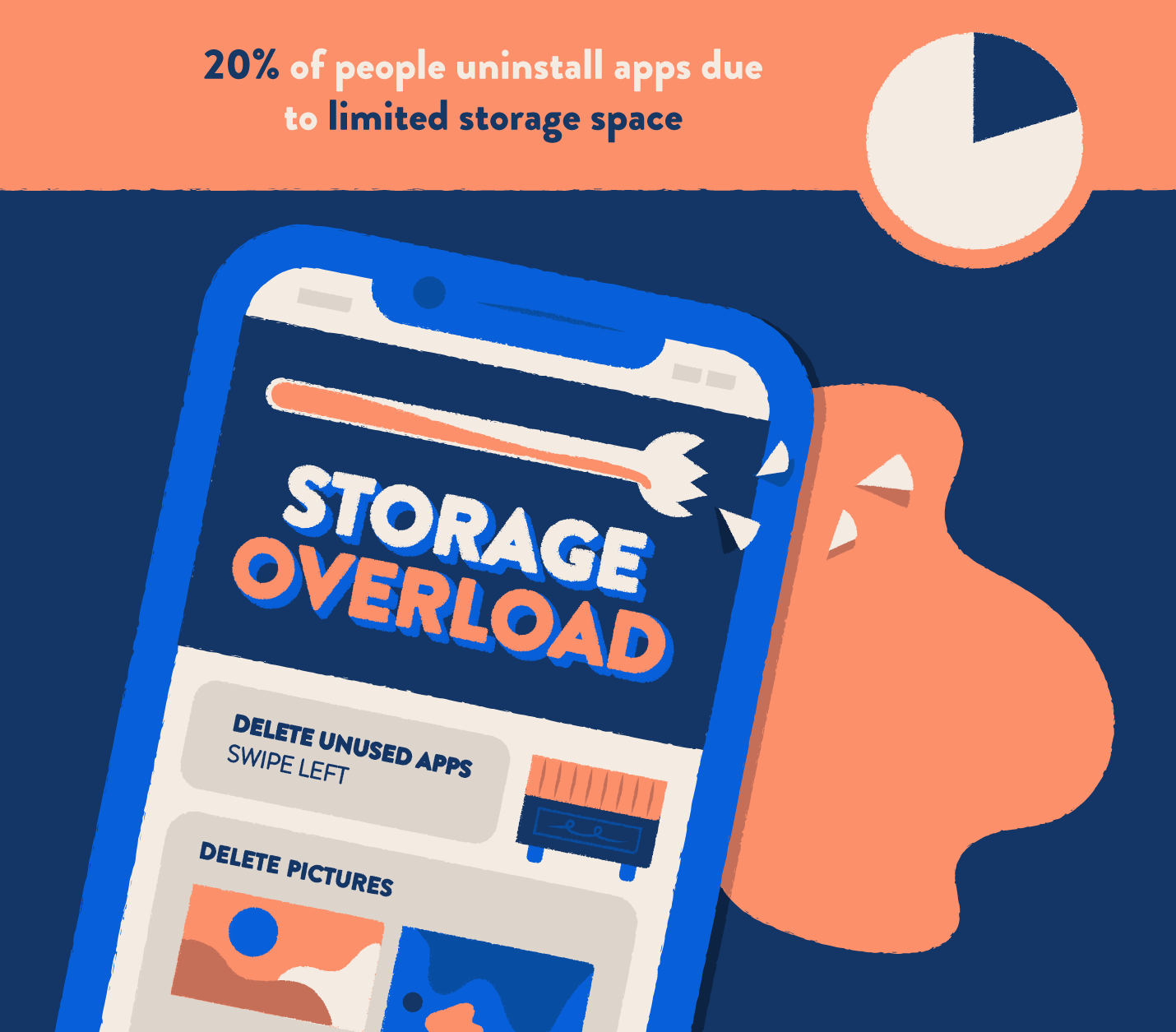Loose lips sink ships.
And loose guidelines about your app’s advertising and user communication policies push users to uninstall, sinking your customer relationships.
In a recent survey of over 2,000 mobile app users, we asked their main reason for uninstalling mobile apps and found the top reasons are:
- They no longer use the app
- Limited storage space
- Too much advertising
From the results of this survey, we were able to get to the root causes of a rise in app uninstalls.
Keeping users engaged, respecting sensitivity to advertisements, and performing adequate software testing are some of the solutions to the top reasons users uninstall apps. You can continue reading for more solutions or jump to the infographic with visualizations of the survey results.
Why Are People Uninstalling Apps?
No app is safe. It’s a M-app Exodus, a Mass App-odus. Ok, let’s not take this too far, but people uninstall apps every day for a number of reasons.
Perhaps their reasons for uninstalling are legitimate (despite your best intentions).
For example, a security breach compromised trust and therefore resulted in a lost user. Other times, their reasons for uninstalling apps may be out of your mobile marketing team’s hands. For example, limited storage space.
The time horizon for user engagement may differ from app to app. Travel apps, for example, are not likely to have daily active users since travel is typically a less frequent occurrence. This is a likely explanation for why travel apps experience one of the highest uninstall rates across industries: 35% of users churn within 2 weeks.
The obvious goal of most apps is to remain relevant enough to warrant the consumed storage space, but really, maintaining user engagement should be a top priority as our survey results indicate.
39% of People Uninstall Because They No Longer Use The App
The app isn’t “sticky” enough.
Overwhelmingly, users are uninstalling apps because they simply do not use the product. This could mean your engagement and retention efforts are ineffective or signal bigger problems with the value proposition.
Stickiness, like virality in marketing, is something that can be encouraged but is not predictable with any degree of accuracy. If your DAU (Daily Active Users) to MAU (Monthly Active Users) ratio is on the decline, meaning daily active users are returning with less frequency, this could be a warning sign of an upcoming rise in uninstalls.
TIP: Track user engagement and retention rate metrics to make necessary increases or decreases in re-engagement campaigns, such as push notifications and in-app messaging. Use caution, however — the next section covers why aggressive communication tactics can actually drive customers away.
28% of People Uninstalled Apps Because of Too Many Ads and Notifications
By now, you might think most people have accepted the unspoken agreement that freemium products are available in exchange for receiving advertisements. Although people have come to expect mobile apps to be free, they seem to have become more sensitive to advertisements.
But let’s face it, this sensitivity could be a result of invasive and aggressive advertising tactics.
Ad-blocker software, or worse, user churn, are consequences of too many advertisements. In fact, over 15% of respondents specifically cited too many advertisements as the main reason for uninstalling apps.
TIP: First, consider how advertisements will interrupt the user experience and work around those critical bottlenecks. Track conversion rates and reactions triggered by advertisements and push notifications.
Second, use a platform that allows for intent based segmentation. It identifies three user segments: most likely, moderately likely, and least likely to convert. With a deeper understanding of user intent, you can effectively send more relevant messages — and avoid spamming users with unnecessary notifications.
20% of People Uninstall Apps Due to Limited Storage Space
It might not come as a surprise to learn that storage is a constraint for many smartphone users, since the average smartphone has 35 apps installed.2 You may even have first-hand experience with those iOS “Storage Almost Full” and Android “Storage Space Running Out” notifications.
Women were more likely to uninstall apps due to limited storage space (although not sure how surprising this statistic is knowing how many photos are on my wife’s phone). In fact, 59% of respondents who chose “Limited storage space” as the main reason for uninstalling apps were women.
TIP: The average app consumes 38MB of space.3 Try to keep your app below this baseline average without compromising production quality. Using software best practices, for example code minification, can help reduce content load speed and data provided by your app.
11% of Users Removed Apps for Technical Issues or Confusion
Although technical issues, such as bugs and app crash reports, are a near inevitability for software products, they should not be common enough to warrant uninstalls in droves. Over 5% of respondents reported technical issues as the main reason they uninstall apps.
TIP: One way to mitigate the risk of technical issues is to insist on rigorous software testing and a lengthy beta test before launching at full scale. Since testing won’t eliminate bugs entirely, especially as new features are released, focused attention on your mobile app analytics and crash reports can provide insight into what’s causing technical issues.
Everyone has likely encountered a piece of software that was confusing to use, whether it was the first attempt at using Snapchat’s “intuitive” UI or navigating a government website.
You might assume an older generation (65+) would have the most confusion when using mobile apps, but another age cohort proved more likely to report removing apps because they were confusing to use: 25-34 year-olds.
In fact, 24% of those who responded “confusing to use” were 25-34 years old, while only 21% were 65 years old or older.
Tips To Prevent App Uninstalls
As you are now well aware, the reasons for app uninstalls are plentiful. You might even have received feedback from users that they uninstalled your app for a reason that was not included above.
If you want to keep your users engaged and your app installed on their phone, we have included tips for your team to consider moving forward, to recap:
- Use caution with advertisements and push notifications to avoid overwhelming users.
- Track conversion rates and reactions triggered by advertisements and push notifications.
- Implement rigorous software testing and lengthy beta tests.
- Monitor crash reports to uncover technical issues.
- Proactively collect user feedback through in-app surveys and polls.
Implementing a successful user engagement strategy is one of the most important tools for preventing app uninstalls at your disposal. Learn more about how to delight customers and keep users coming back with our guide to user engagement.

See how today’s top brands use CleverTap to drive long-term growth and retention
Subharun Mukherjee 
Heads Cross-Functional Marketing.Expert in SaaS Product Marketing, CX & GTM strategies.
Free Customer Engagement Guides
Join our newsletter for actionable tips and proven strategies to grow your business and engage your customers.







![Why Users Uninstall Apps: 28% of People Feel Spammed [Survey]](https://clevertap.com/wp-content/uploads/2018/12/reasons-people-uninstall-apps-survey-header1-e1551689988935.png?w=900&w=721)